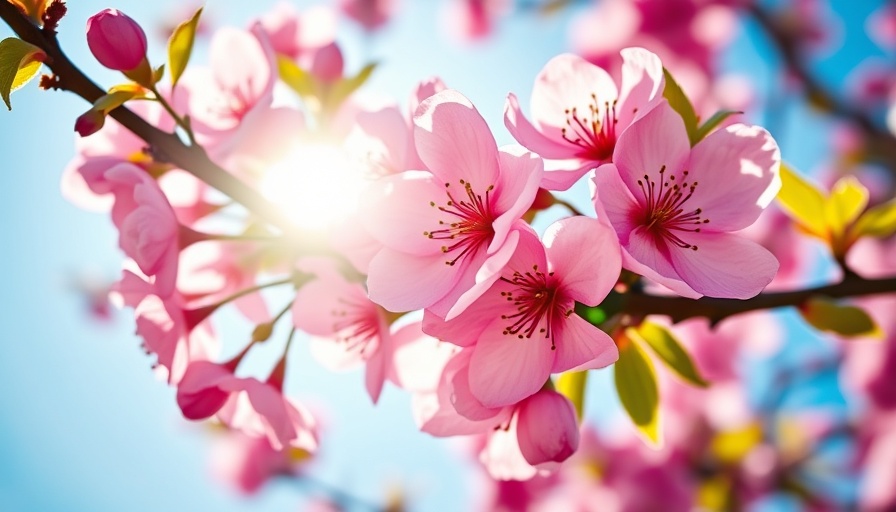
Cherry Trees: Nature's Artistry in Bloom
Imagine stepping into your garden each spring, greeted by the breathtaking sight of cherry trees adorned with delicate pink and white blossoms. These trees are not just visual spectacles; they also embody the essence of seasonal change and the beauty of life’s fleeting moments. Particularly revered in cultures around the world, the cherry blossom signifies renewal and the ephemeral nature of beauty. From early March to April, cherry trees burst into bloom for a brief period, lasting around 7 to 10 days, captivating all who lay eyes on them.
Apple Trees: A Dual Delight of Beauty and Bounty
When it comes to blossoms, apple trees hold their ground with charming displays that transition from soft pinks to whites. These delightful flowers don’t just impress the eye—they attract beneficial pollinators, enhancing your garden’s ecosystem. Beyond their aesthetic appeal, apple trees offer the promise of juicy, homegrown fruit, making them an investment in both beauty and bounty. With proper care and the right conditions, your backyard can transform into a haven of color and flavor during the late spring months, inviting birds and bees alike.
Plum Trees: Embracing Early Blooms
Plum trees claim the spotlight early in spring with their early blooming flowers, often appearing before the leaves emerge. Whether in radiant white or soft pink hues, these blossoms create a stunning, snow-covered look on the branches, signaling the arrival of warmer days. Plum trees are excellent choices for gardeners looking to enhance their spaces, as they not only provide visual delight but also delicious fruit. A well-placed plum tree can become a centerpiece in your garden, offering shade and beauty against a blue sky.
Choosing the Right Trees for Your Landscape
Creating an edible garden means selecting the right trees that suit your climate and preferences. Dwarf varieties, such as the 'Snow Fountain' cherry or compact apple trees, are fantastic options for smaller yards, allowing you to indulge in the beauty of flowering fruit trees without overwhelming your space. These trees require minimal maintenance, making them ideal for gardeners who want the best of both worlds—beauty and practicality.
The Benefits of Flowering Trees in Your Yard
Beyond their aesthetic appeal, flowering trees have multiple benefits for gardeners and the environment. Not only do they attract pollinators, but they also provide shade, improve air quality, and can even increase your property’s value. Flowering trees serve as a living reminder of nature's beauty and resilience, inspiring mindfulness and appreciation each spring as they burst into life.
Future Trends: The Rise of Edible Landscaping
As more homeowners seek to make sustainable choices, the trend of edible landscaping is gaining momentum. People are increasingly interested in growing their own food, and incorporating fruit-bearing trees into gardens is a perfect step in this direction. These trees double as beautiful ornamentals and functional edibles, creating a thriving ecosystem right outside your door. Imagine walking into your yard and picking fresh apples or cherries for your morning oatmeal—a perfect harmony of beauty, taste, and sustainability!
Conclusion: Transform Your Garden Today!
This spring, consider planting cherry, apple, or plum trees in your backyard. Not only will they enhance your landscape with their stunning flowers, but they will also provide you with delicious fruits to enjoy. Start designing your garden with a focus on edible beauty. Dive into your outdoor space, and discover how rewarding it can be to grow your own food while appreciating the artistry of nature.
 Add Row
Add Row  Add
Add 




Write A Comment